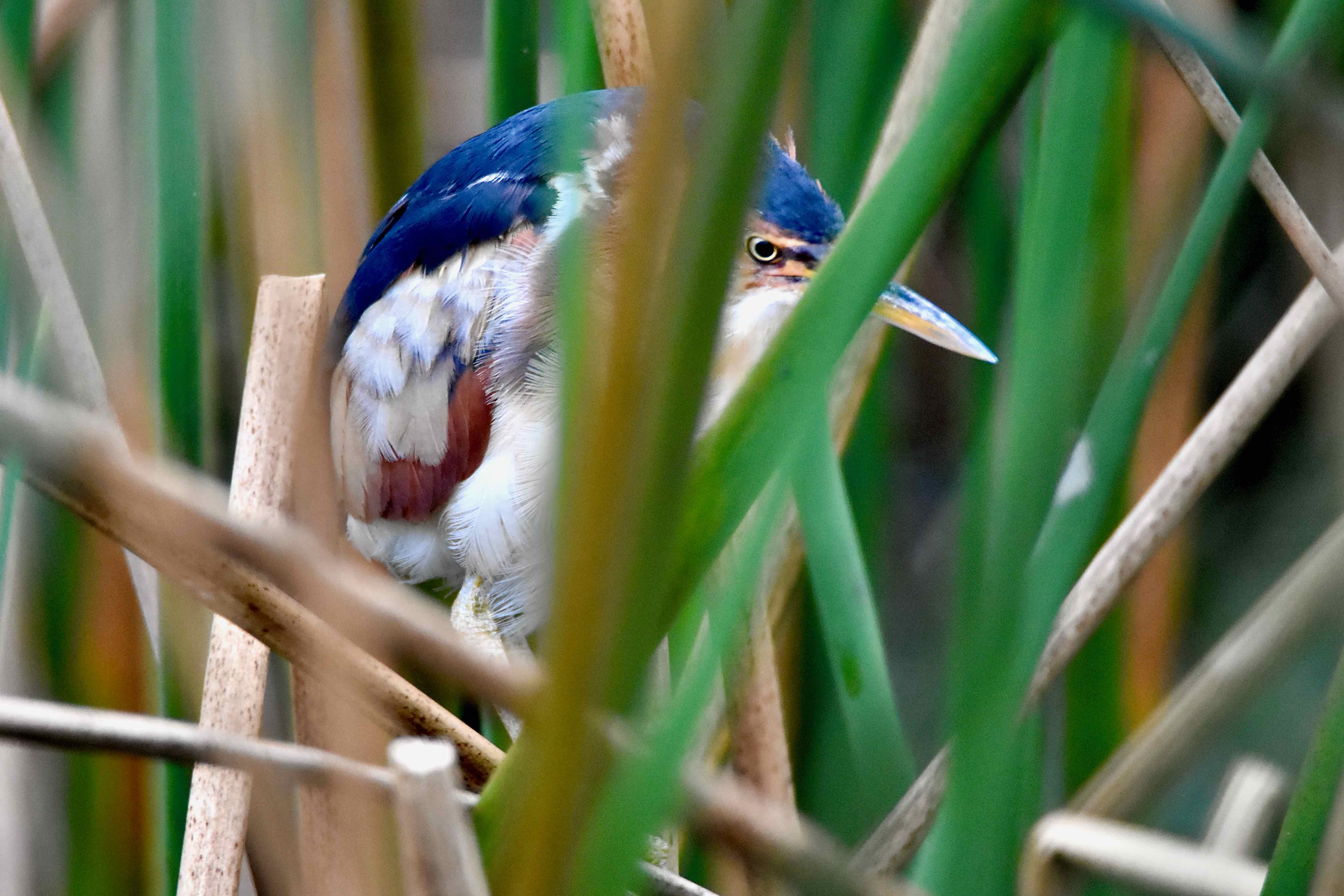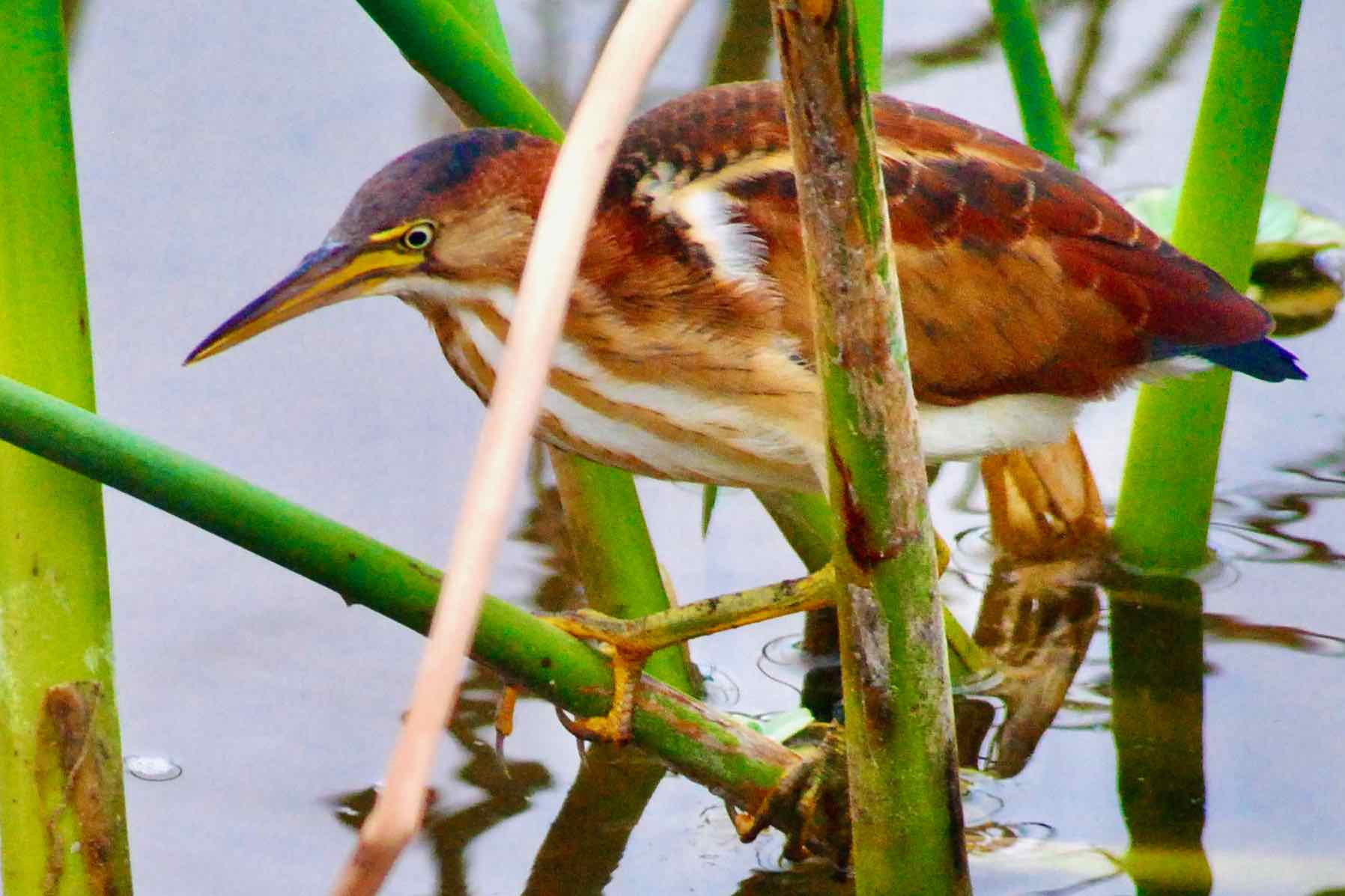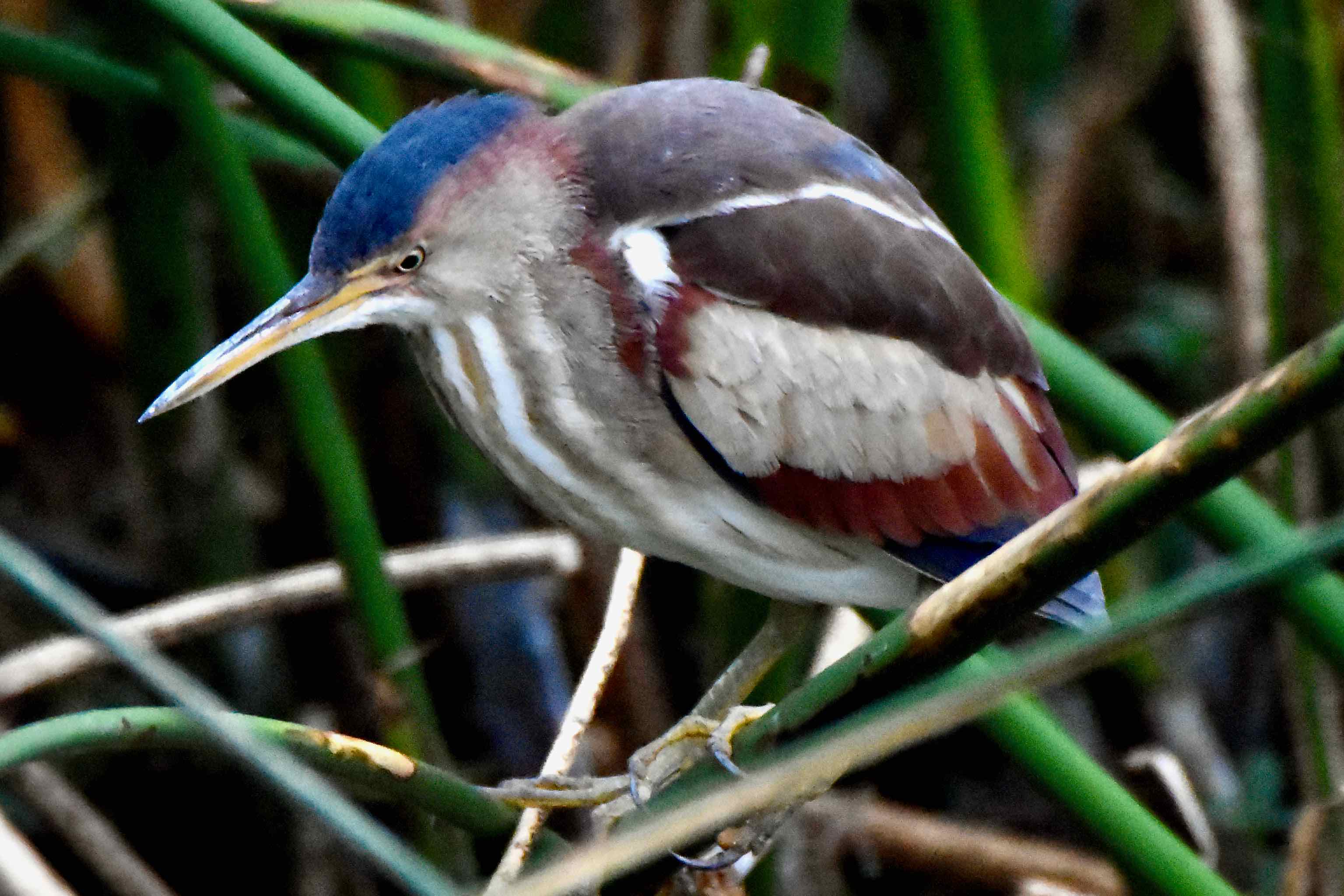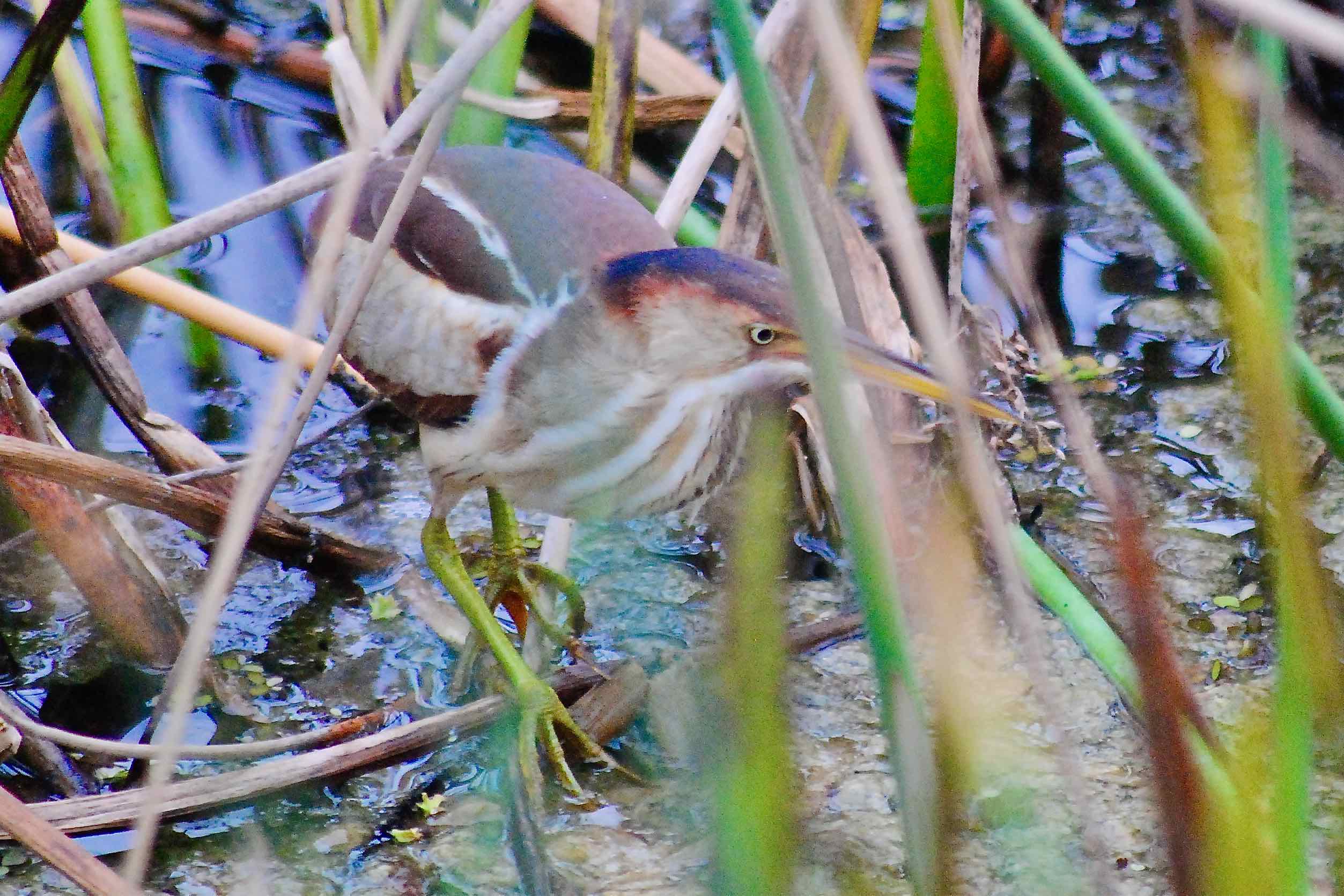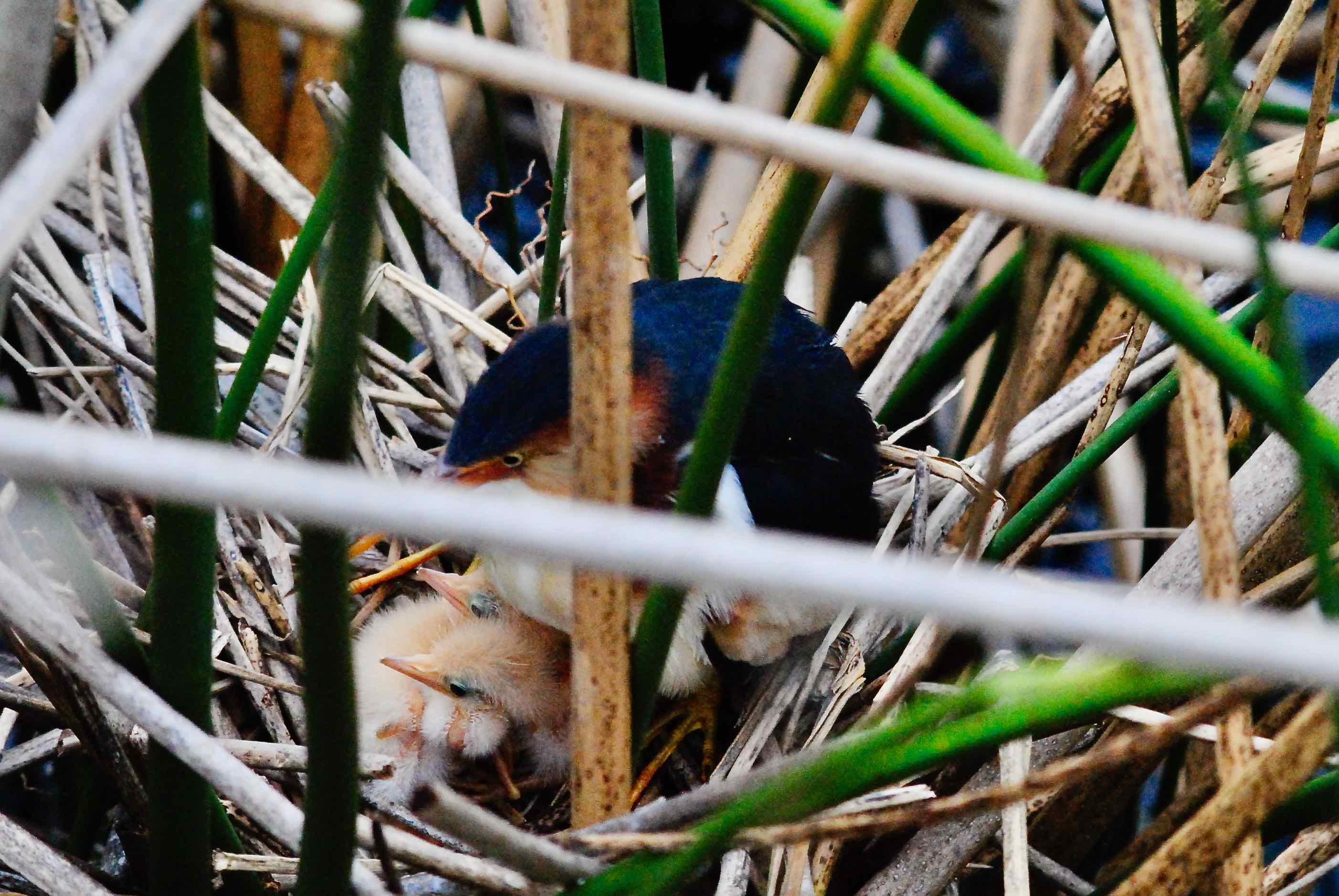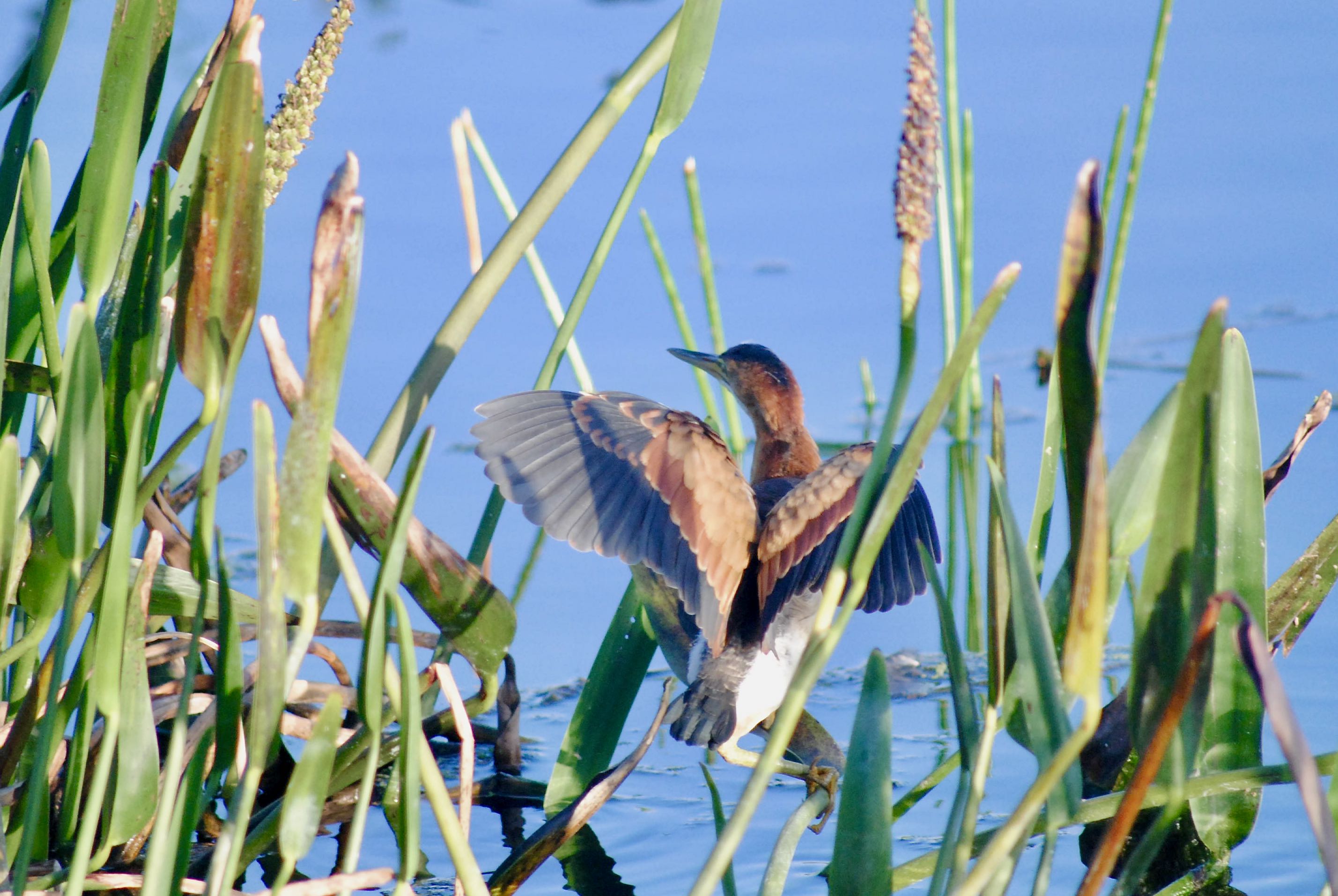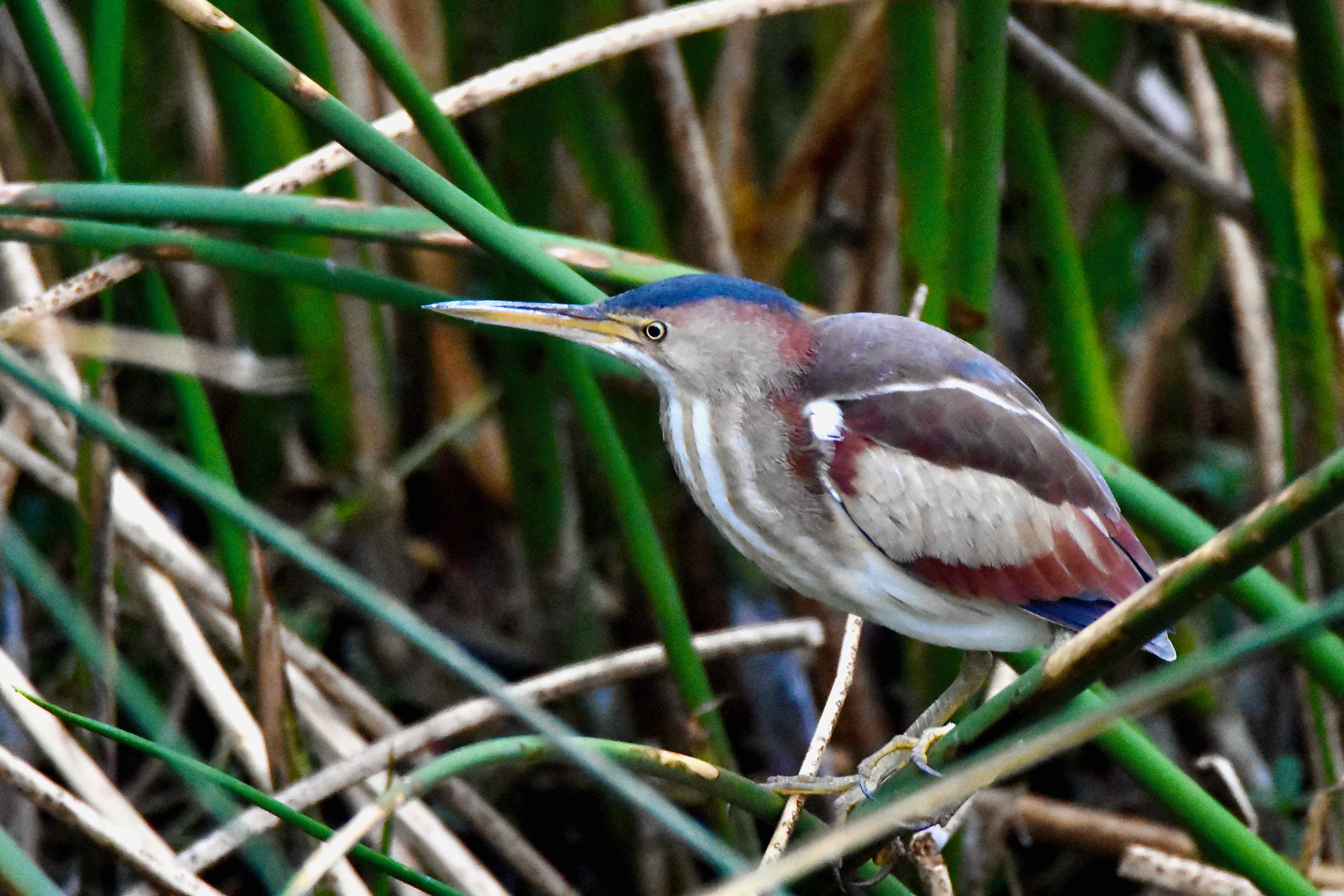
Least bittern, photographed at Green Cay Nature Center, Boynton Beach, Palm Beach County, in April 2017.
The least bittern, Ixobrychus exilis, is the smallest member of the heron family found in North America, and among the smallest in the world. It's a common bird but it's well camouflaged and tends to stay out of sight and can be difficult to spot.
And it's a year-round resident of South Florida, but according to our observations, most likely to be seen during the spring and early summer nesting season when marsh vegetation has died back a bit and bittern couples have extra mouths to feed so they're out and about hunting more frequently. A portion of the least bittern population is migratory. They spend summers over much of the eastern United States, including northern Florida, and pockets of the West Coast. They winter in portions of Mexico and Central America. Year-round populations are also found in the Caribbean and South America. A map of their distribution resembles a map of the great waterways of the western hemisphere.
And that's no accident. Bitterns are marsh birds. Unlike most herons, they are not waders. Rather, they're the Wallendas of the wild, climbing out on reeds over water, where they'll wait for a tasty fish or bug to wander by. They're also capable of straddling two reeds low to the water. Also on their menu: the occasional crawfish, frog and snake.
Bitterns are somewhat similar in appearance to the green heron and share the same habitat. Bitterns, however, have buff and white vertical strips on the throat and chest and generally are a lighter brown than their cousins. Bitterns also tend to cock their heads at an angle, which greens don't do.
Male bitterns are darker than females, nearly black on their backs and heads. Females are more brown on the head and back. (Compare the middle photo in the top row below with the photos on either side of it.)
Breeding season in Florida runs between March and August, though we tend to see more activity in late spring and early summer. They tend to nest singly, but will form loose colonies in prime habitat. Males do most of the nest-building, choosing a site near the ground amid dense vegetation. They'll bend some of reeds and sticks and other bits of vegetation to form a platform.
Females lay clutches of two to seven eggs that hatch in about two-and-a-half weeks. Both parents handle incubation duty; both parents also share the job of feeding their offspring.
Normally, the hatchlings will spend the first two weeks of their lives in the nest, but can leave it after only six days if their parents perceive a threat. Bitterns can have two broods during a season.
As we noted, least bitterns are among the smallest of all herons. They are usually 14 inches long, or less, with a wingspan that might reach 18 inches. By comparison, their close cousin, the green, can be as long as 18 inches with a wingspan of two feet.
The least bittern population is secure, generally speaking, but could be challenged in the future by loss of habitat, encroachment of invasive plants and pollution from storm run-off degrading habitat and affecting their food supply.
Least bitterns are members of Ardeidae, the family that includes herons, egrets and bitterns. The least's other cousin, the American bittern, is much larger and is a winter-resident of Florida.
Green Cay Nature Center

